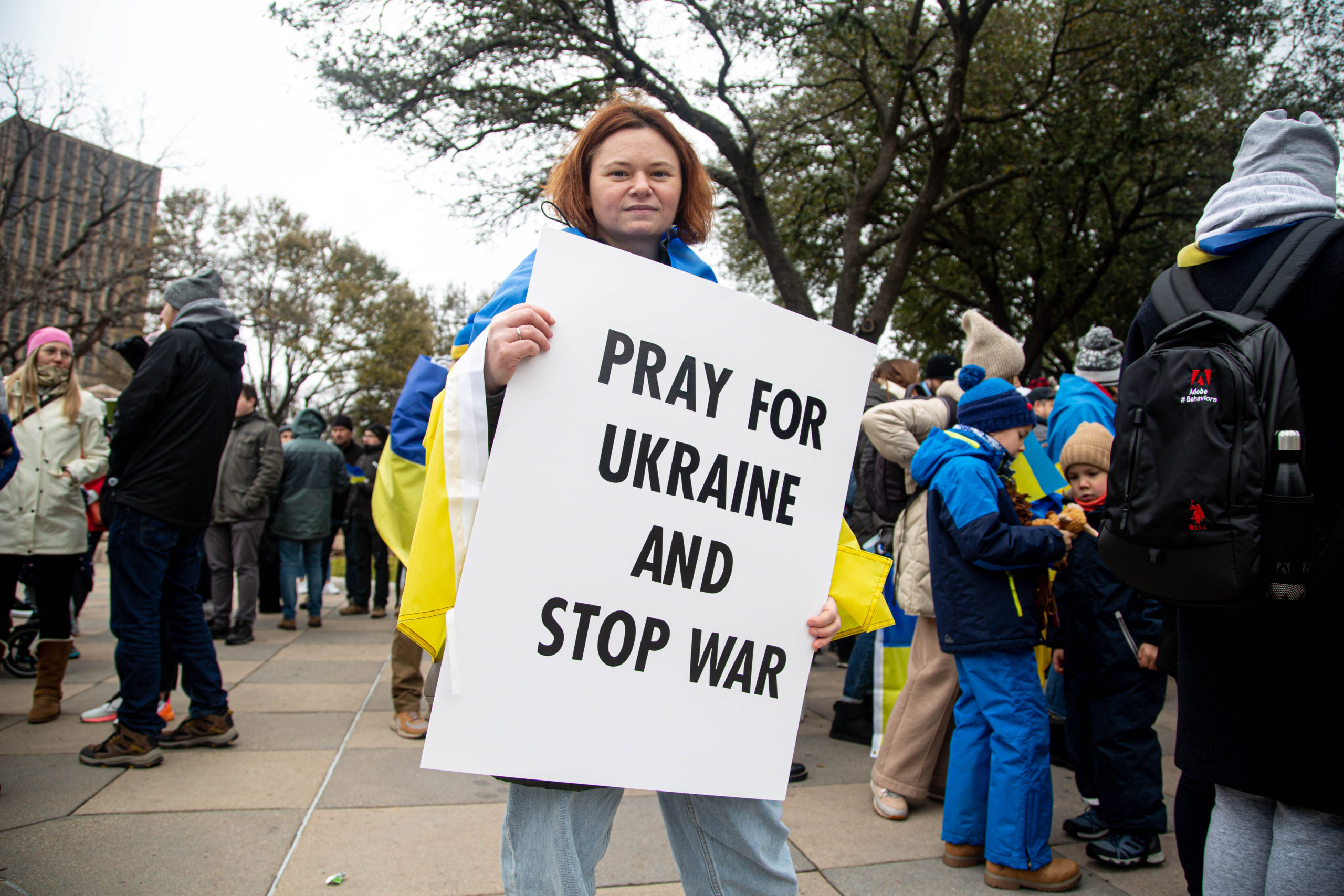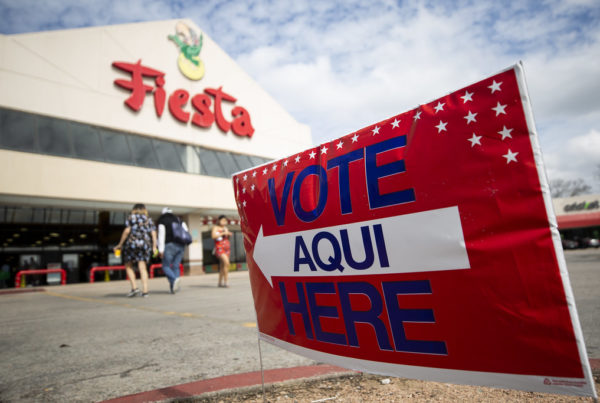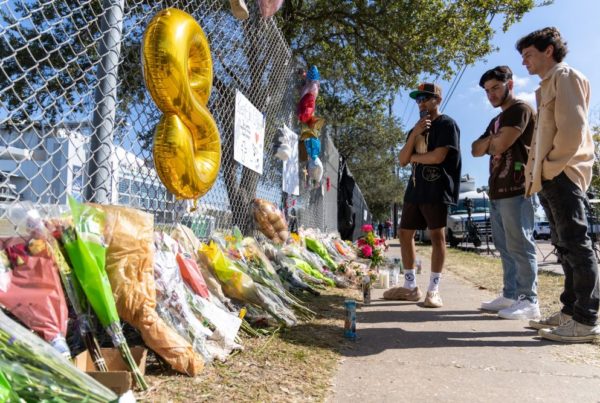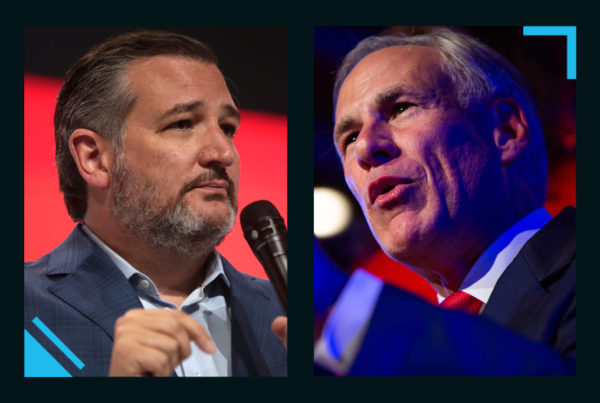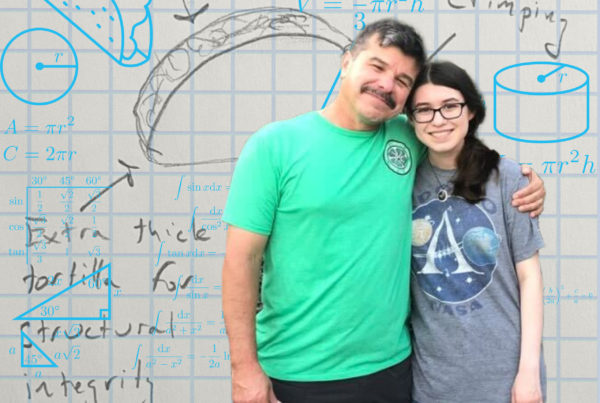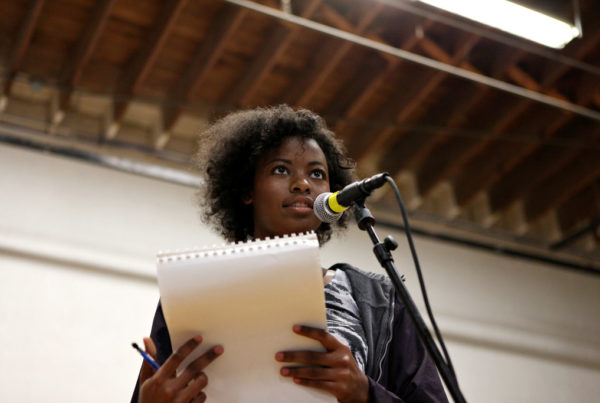One month ago, President Biden pledged to accept 100,000 Ukrainian refugees into the United States. Since then, tens of thousands of Ukrainians have showed up at land borders between the United States and Mexico, where a record number of migrants from Mexico and Central America have also been trying to get into the country for months or longer.
But soon, the policy allowing Ukrainians into the country is changing. They will be subject to Title 42, the Trump-era policy instituted during the pandemic that allows border officials to rapidly deport migrants to protect public health. In addition, the southern border will no longer be a valid entry point for Ukrainian refugees without pre-authorization.
Todd Gillman, Washington Bureau Chief for The Dallas Morning News, spoke with Texas Standard about how the Biden administration wants Ukrainians to go through a more “regular” asylum process, which includes having a sponsor inside the United States. He also explains what these changes will mean for Biden’s pledge. Listen to the interview with Gillman in the audio player above or read the transcript below.
This interview has been edited lightly for clarity.
Texas Standard: What changes are in store for Ukrainian refugees trying to come to the United States?
Todd Gillman: On Thursday, the administration announced the changes as of Monday. Ukrainians who try to come into the United States via Mexico at land crossings are going to be turned away under the usual immigration policies, and including Title 42, which will be in place until May 23 – the pandemic emergency power that allows the government to turn away asylum-seekers and others.
The Biden administration is trying to make this a more regular kind of process; they want Ukrainians to have sponsors. So going forward, instead of just presenting yourself at the border and saying, “I’m from Ukraine, it’s really scary back there, I would like asylum,” and being allowed in, they will need to have a pre-authorized family sponsor or non-governmental organization.
One of the refugee resettlement organizations will have to sponsor these people and there will be a quota of 100,000. It’s a little unclear whether the 15000 or more Ukrainians who have already come into the country before this program was put in place will count towards that 100,000 quota, the administration has not verified that.
You mentioned Title 42 will be in place until mid-May. Is the Biden administration still planning on that timeline? Why is the administration is making this change now?
It may in fact have some some connection with Title 42 being winded down. There is obviously a huge debate over the wisdom of getting rid of Title 42 at the moment. It has been a very effective tool for the government under Trump and under Biden to expel and exclude migrants at the border. Obviously, not the ones who come in between ports of entry illegally and without permission. But others can be easily turned away or returned if they show up.
On the other hand, if there’s no justification under a public health emergency, there’s no justification. So Title 42 is never intended to be, in perpetuity, an immigration-metering tool. It is related to a pandemic, which generally is under control, and as soon as Title 42 is lifted in a few weeks, everyone expects that there will be a flood of migrants at the border and the federal government needs to get that under control. And dealing with Ukrainian refugees is part of that solution.
So this is the Biden administration’s way of trying to at least do something to reduce the numbers of people that are presenting themselves at the border after the expiration of Title 42?
Yes. They haven’t really framed it that way, but there’s no question that it distracts from the broader problem of, overall, we’re coming up on 2 million, the past year, migrants coming across the border, the Southwest border. So every family of Ukrainians that presents – and that’s a unique situation; they’re in the middle of a war, the U.S. government and the American populace is very sympathetic to them – but they’re in a different situation from economic migrants who are coming north from Central America or Cuba or Venezuela, and obviously from Mexico, seeking opportunity.
So it’s part of a broader picture, and it’s kind of a unique situation. That said, there is a lot of resentment in the immigration-advocate community that Ukrainians have been exempted from Title 42, until Monday, unlike refugees and migrants from Central America and Haiti and other countries.


